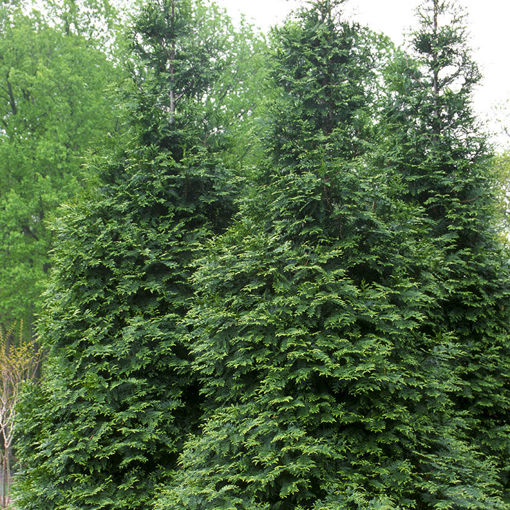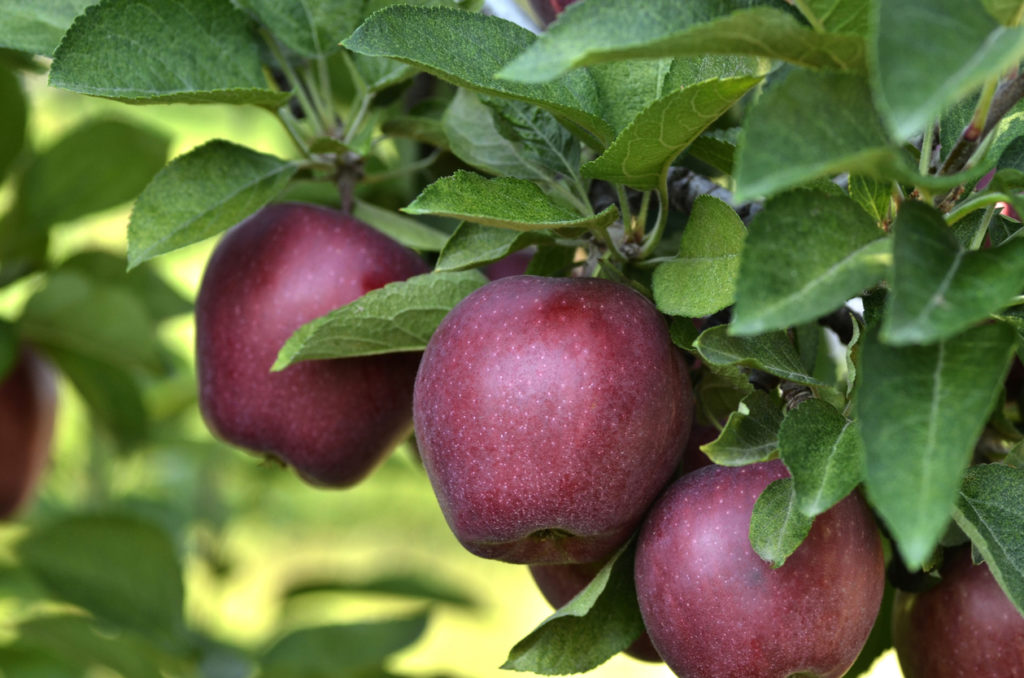Give before midnight on July 31 to double your impact where trees need us most. CHOOSE A PROJECT
Springtime is well underway. It’s the perfect time to plan your landscape design and find the best greenery that best suits your needs. So if you’re looking to green your property fast, then consider these fast-growing trees and shrubs.
Here are the most popular fast-growing trees sold through the Arbor Day Foundation tree nursery.
- North Privet (Ligustrum x ibolium)
This deciduous or semi-evergreen shrub is America's fastest-growing hedge, growing up to 3' per year. The shrub's dense, dark, glossy green foliage makes it an excellent choice for hedges and privacy screens.
You can shear this privet easily to give it a more formal appearance. Therefore when you grow it as a hedge, shearing it early and often helps to develop thick layers of branches for year-round privacy.
2. Green Giant Arborvitae (Thuja standishii x plicata 'Green Giant')
The green giant arborvitae is a large, vigorous, fast-growing evergreen—shooting up by as much as 3' per year until maturity. Its natural pyramidal to conical form boasts dense, rich green foliage that darkens or bronzes slightly in the winter.
This is an ideal landscape tree for use as a screen, hedge or single specimen. In addition, it's resistant to wind, once established, and can withstand heavy ice or snow, making it a good choice for a natural windbreak.
3. Hybrid Poplar (Populus deltoides x Populus nigra) Hybrid poplars are the thoroughbreds of the tree world. Their claim to fame is speed, with vertical growth of 5–8' per year not being uncommon. Easily harvest this cottonless hybrid for firewood in five to seven years, which makes it a sustainable source. It also works well for visual screens and hillside or sand dune stabilization. While nice for quick shade, plant the hybrid poplar tree in landscapes where occasional limb breakage is not a problem.
Looking up poplar trees.
4. Blue Hydrangea (Hydrangea macrophylla 'Nikko')
The blue hydrangea is the image most of us conjure up in our heads when we think of hydrangeas in general. It is a timeless landscape plant that everyone favors.
Giant, long-lasting, mophead blooms appear in the summer, adding lovely color to the landscape. These shrubs work well as stand-alone specimens or as a hedge.
5. Norway Spruce (Picea abies)
Norway spruce is a familiar sight in much of the United States, even though the tree is native to Europe. Throughout the globe, this tree has many uses including lumber, pulpwood, Christmas trees and landscape specimen trees. Its dense branching pattern and tolerance of soil variations have made it a popular tree for windbreaks.
If you have enough space and want to add a sense of formal dignity to your landscape, the Norway spruce will suit you well.
Check out DIY: A Beginner's Guide to Landscaping.
6. Loblolly Pine (Pinus taeda)
The loblolly pine is an important American timber tree, cloaked in beauty during much of the year. With a natural range reaching across the southeastern United States, this pine is distinguished by its large, columnar trunk; attractive bark in broad, reddish-brown plates; and its pale green needles.
As one of the fastest growing southern pines, it is used for a quick screen in many landscapes.
7. Weeping Willow (Salix babylonica)
This graceful giant is known for its open crown of wispy, ground-sweeping branches and long, slender leaves. Often seen as one of the first indications of spring, the weeping willow’s yellow twigs and green foliage appear early in the season—sometimes as early as February.
The tree is easy to grow and quick to take root, reaching heights between 30' and 40' and nearly the same in width. It lends itself well to planting singly or in small groves near the edge of ponds, lakes and rivers.
8. Leyland Cypress (x Cupressocyparis leylandii)
Noted for its rapid growth and slender shape, the Leyland cypress has found wide popularity over a large range of the United States. It grows well in a wide variety of soil and climate conditions and makes an excellent wind break as it provides a dense barrier with good color all 12 months of the year.
This sterile hybrid is produced in great numbers for use in Christmas tree plantations, in windbreaks and along boundary lines. It beautifies the landscape around homes, across campuses and in parks.
9. Tuliptree (Liriodendron tulipifera)
One can argue about whether the "tulips" are the outline of its leaves or its cup-shaped flowers. But both undoubtedly contributed to the fanciful name given to this tree by early settlers. And the tuliptree is still beloved for its beauty today, serving as the state tree of Kentucky, Indiana and Tennessee. It is the tallest of the eastern hardwoods—and a rapid grower when conditions are right.
If you’re looking for a stunning tree that grows quickly and doesn’t suffer from many pest problems, your search is over.
10. Red Delicious Apple (Malus domestica 'Red Delicious')
Of the more than 2,500 different cultivated varieties of apple trees in North America today, the most famous and widely planted is the red delicious. Perhaps because of its mild flavor. Possibly because of the long storage life. Or maybe because the name is so appealing.
Legend states that the red delicious apple was named when its discoverer in Iowa sent samples to a commercial nursery in 1892. The nursery owner tasted one of the apples and exclaimed, "Delicious!"














